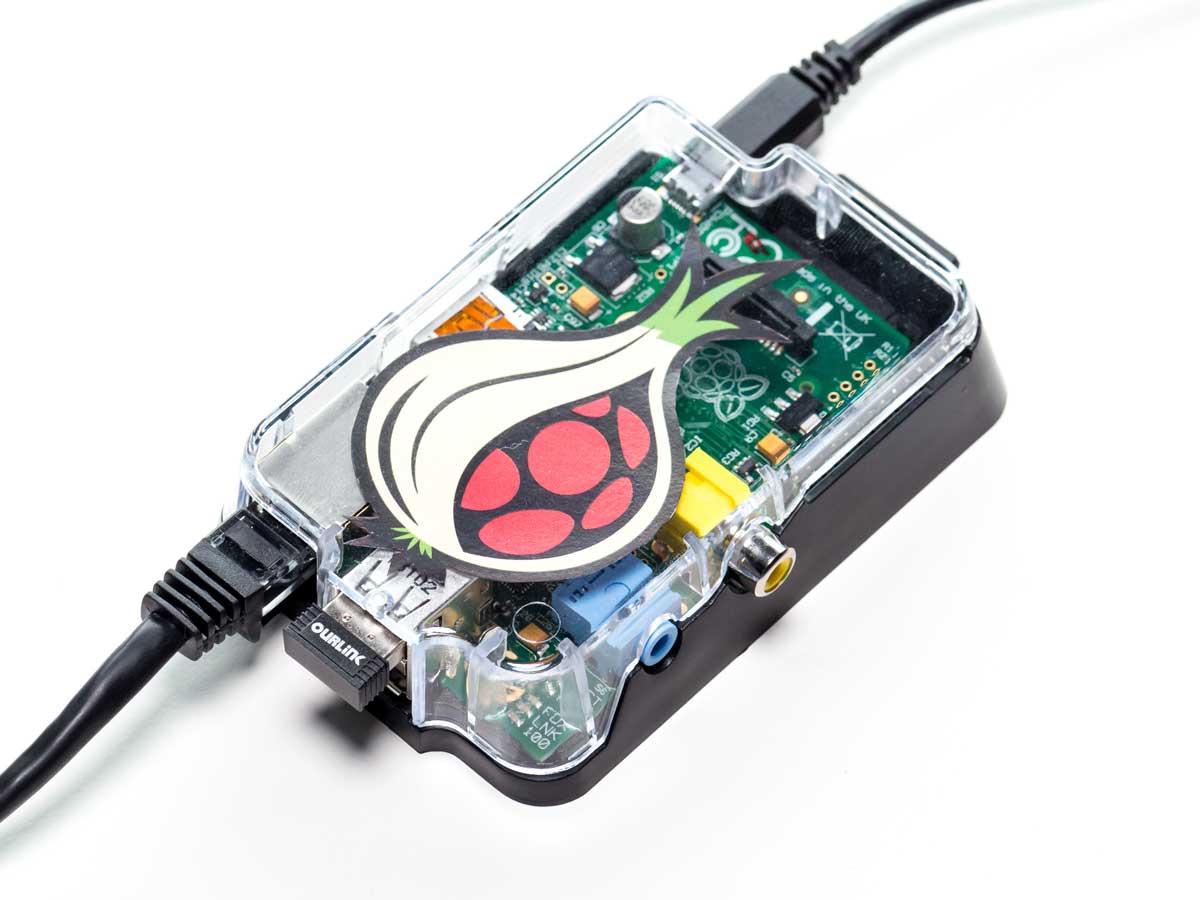Feel like someone is snooping on you? Browse the web anonymously anywhere you go with the Onion Pi Tor proxy. This is a cool weekend project that uses a Raspberry Pi mini computer, USB wi-fi adapter, and Ethernet cable to create a small, low-power, and portable privacy Pi.
Using it is easy-as-pie. First, plug the Ethernet cable into any internet connection in your home, work, hotel, or conference/event. Next, power up the Pi with the Micro-USB cable connected to your laptop, or with a wall adapter. The Pi will boot up and create a new secure wireless access point. Connecting to that access point will then automatically route any web browsing from your computer through the anonymizing Tor network. Your tracks are swept clean.
What Is Tor?
Tor is an “onion routing” service: Internet traffic is wrapped in layers of encryption and sent through a random circuit of relays before reaching its destination. This makes it much harder for the server you’re accessing (or anyone snooping on your internet use) to figure out who and where you are. It’s an excellent way for people who are blocked from accessing websites to get around those restrictions. Journalists, activists, businesspeople, law enforcement agents, and even military intelligence operatives use Tor to protect their privacy and security online.
Why Use a Proxy?
You may have a guest or friend who wants to use Tor but doesn’t have the ability or time to set it up on their computer. You may not want to, or may not be able to, install Tor on your work laptop or “loaner” computer. You may want to browse anonymously on a netbook, tablet, phone, or other mobile or console device that cannot run Tor and does not have an Ethernet connection. There are lots of reasons you may want to build and use an Onion Pi, not least of which is that it is an interesting way to learn about Raspberry Pi, network interfaces, and the Linux command line.
Warning
Before you start using your proxy, remember that there are a lot of ways to identify you, even if your IP address is “randomized.” So delete and block your browser cache, history, and cookies — some browsers even allow “anonymous sessions.” Do not log into existing accounts with personally identifying information (unless you’re sure that’s what you want to do). Use SSL whenever available to encrypt your communication end-to-end. And visit torproject.org for more info on how to use Tor in a smart, safe way.
This tutorial is a great way to make something fun and useful with your Raspberry Pi, but we can’t guarantee it’s 100% anonymous and secure. Be smart and paranoid about your Tor usage.
















